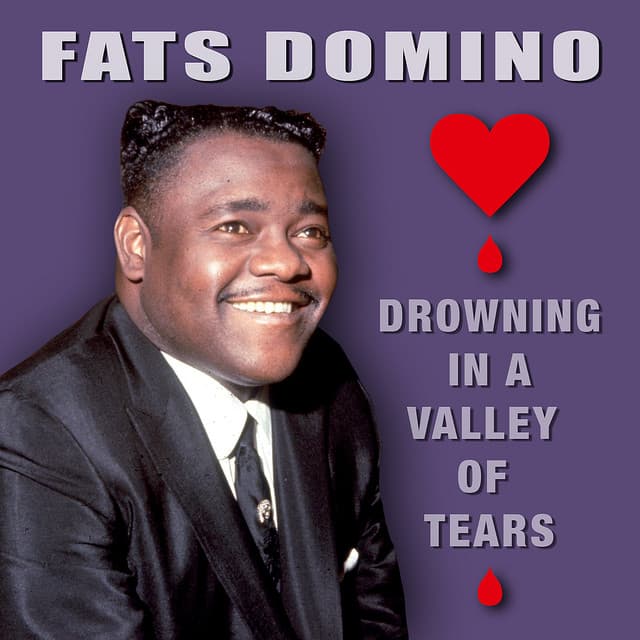
🎹 The Enduring Heartbreak of “Valley of Tears”
The late 1950s—a time of slicked-back hair, poodle skirts, and a burgeoning new sound that was shaking the foundations of traditional music. And at the heart of that revolution, yet somehow always grounded in the warm, familiar tones of his New Orleans roots, stood Fats Domino. The man born Antoine Domino Jr. possessed a singular charm, his ivory-tickling style a perfect blend of boogie-woogie propulsion and gentle, melodic grace. It’s to this golden era we must travel to understand the enduring, soulful ache of “Valley of Tears,” a song that managed to cut through the din of early rock and roll with a profound, almost spiritual melancholy.
Released in 1957 as a single on Imperial Records (catalog number 5457), this track wasn’t just another hit; it was a testament to the emotional depth that the pioneers of rock could achieve. Co-written by the prolific Diann Roberts and Domino’s long-time collaborator, arranger, and mentor, Dave Bartholomew, the song resonated immediately with the public. Its success was undeniable, climbing the charts to a respectable No. 8 on the Billboard Top 100 and reaching an even stronger No. 2 on the R&B Best Sellers in Stores chart. For many who remember hearing it on their transistor radios or at a sock hop, the song holds a distinct place in the soundtrack of their youth, a poignant counterpoint to the more overtly joyous hits of the time.
The story behind “Valley of Tears” isn’t as tumultuous as some rock legends, but it’s rooted in the universal experience of genuine sadness, giving it its weight and authenticity. While Fats Domino was known for his sunny demeanor and infectious smile, the track is a masterclass in conveying the quiet devastation of a broken heart. Lyrically, the song is a straightforward, moving narrative about a man whose world has collapsed following the departure of his beloved. He is left to wander through a desolate, emotional landscape—the eponymous “valley of tears.”
The genius of the composition lies in its deceptively simple structure and the masterful execution. Domino’s iconic, rolling piano forms the bedrock, but here, the rhythm is deliberately slowed, the characteristic boogie tempo subdued to a stately, mournful pace. Bartholomew’s arrangement adds crucial layers, particularly the subtle, swelling brass section that seems to sigh in sympathy with Domino’s voice. Fats’ vocal delivery is what truly elevates the track; his voice, usually so amiable and robust, takes on a fragile, almost wounded quality. He doesn’t belt out his pain; he confesses it in a weary, resigned tone, which makes the heartbreak all the more palpable. Lines like, “I’m livin’ in a valley of tears / Since you’ve gone / My days are empty and my nights are long,” are delivered not as melodrama, but as stark, undeniable facts.
The meaning of “Valley of Tears” transcends a simple lost-love song. It’s an eloquent exploration of grief, isolation, and the paralyzing inertia of despair. In a decade often remembered for its optimistic post-war boom, this track gave voice to the private sorrows many held close. It connected with listeners because it articulated the feeling of being utterly alone in a moment of profound personal loss, the sense that the whole world has changed color. It spoke to a generation realizing that growing up meant navigating real, significant pain. Furthermore, the record showcases Domino’s extraordinary range, proving he was far more than just a purveyor of upbeat novelties like “Blueberry Hill” or “Ain’t That a Shame.” It cemented his legacy as a soulful interpreter of human emotion, a giant whose foundational rock and roll sound had the capacity for deep, reflective sorrow. It’s a song that, decades later, still requires a moment of quiet contemplation—a truly magnificent, tear-stained jewel in the crown of rock and roll history.